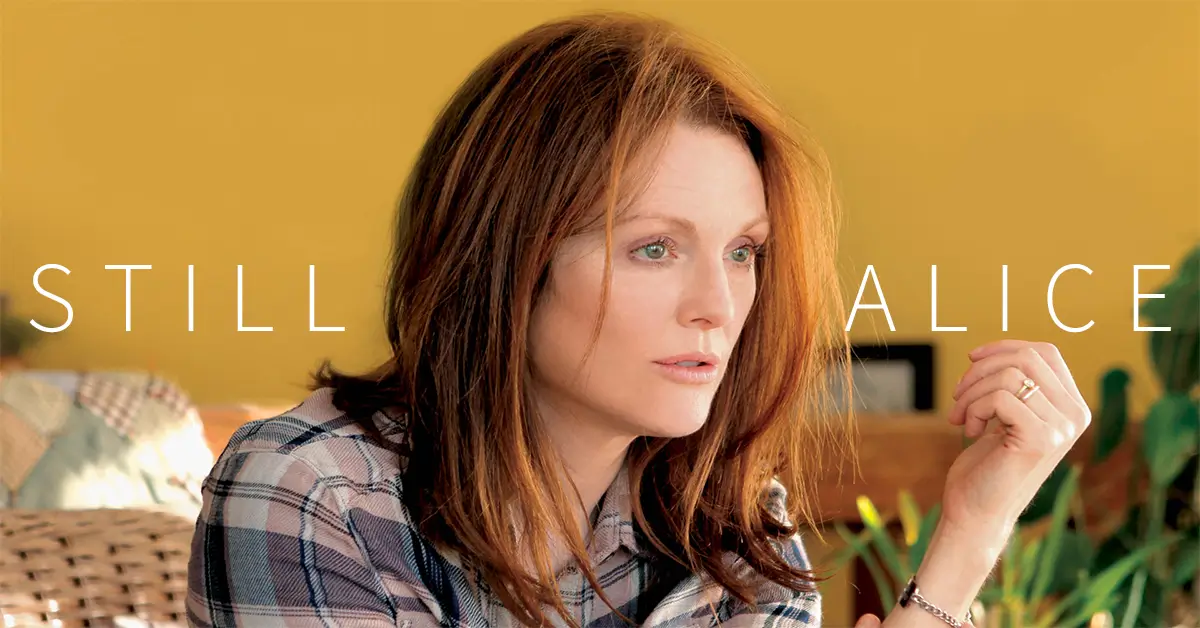Still Alice: A Powerful Portrayal of Alzheimer’s Disease and Its Impact on Identity
In the landscape of films that tackle mental health conditions, “Still Alice” stands as a poignant and illuminating exploration of early-onset Alzheimer’s disease. This film delivers a raw, unfiltered look at how cognitive decline affects not just the individual diagnosed but ripples through family dynamics and challenges our fundamental understanding of identity. By following the journey of a brilliant linguistics professor as she navigates her diagnosis, “Still Alice” offers viewers a window into a mental health condition that’s often misunderstood or oversimplified in popular media. Still Alice A Powerful Portrayal of Alzheimer’s.
Film Overview: Going Beyond the Surface
Title: Still Alice
Release Date & Production Year: December 5, 2014 (USA)
Directors: Richard Glatzer and Wash Westmoreland
Note: Richard Glatzer himself was battling ALS during filming, bringing a unique perspective on degenerative conditions to the direction.
Screenwriters: Richard Glatzer and Wash Westmoreland (adapted from Lisa Genova’s 2007 novel)
Main Cast:
- Julianne Moore as Dr. Alice Howland
- Alec Baldwin as Dr. John Howland
- Kristen Stewart as Lydia Howland
- Kate Bosworth as Anna Howland
- Hunter Parrish as Tom Howland
Genre: Drama
Awards: Academy Award for Best Actress (Julianne Moore), Golden Globe for Best Actress in a Drama, BAFTA Award for Best Actress in a Leading Role
Runtime & Rating: 101 minutes, PG-13

The Journey Through Cognitive Decline
“Still Alice” follows Dr. Alice Howland, a renowned linguistics professor at Columbia University who begins experiencing memory lapses that gradually worsen. After receiving a diagnosis of early-onset Alzheimer’s disease at just 50 years old, we witness her progressive cognitive decline and how she and her family adapt to their changing reality.
The mental health focus of the film centers on neurocognitive disorder, specifically Alzheimer’s disease, but extends to the psychological impact of such a diagnosis depression, anxiety, and the existential crisis that comes with losing one’s memories and sense of self.
Key turning points in the narrative include Alice’s initial diagnosis, her disclosure to her family, her preparation for future memory loss (including a video to her future self), and moments where her deterioration becomes undeniable. Each serves as a window into the progressive nature of the disease and its psychological toll.
The film concludes with Alice significantly diminished cognitively but finding moments of connection through sensation and presence rather than intellectual capacity suggesting that while the disease takes much away, humanity and connection remain possible.
Cinematic Techniques that Enhance Mental Health Portrayal
The film employs several techniques to immerse viewers in Alice’s experience:
Setting: The academic environment of Columbia University creates a stark contrast between Alice’s former intellectual prowess and her decline, heightening the tragedy of her condition.
Cinematography: Director of photography Denis Lenoir uses increasingly soft focus and disorienting camera work as the film progresses, mirroring Alice’s mental fog. Close-ups on Moore’s face capture micro-expressions that convey confusion, frustration, and moments of clarity.
Sound Design: The soundscape occasionally becomes muffled or distorted during scenes where Alice experiences confusion, allowing viewers to experience her disorientation. The understated piano score by Ilan Eshkeri avoids emotional manipulation while supporting the emotional weight of scenes.
Julianne Moore’s Transformative Performance
Moore’s portrayal of Alice earned widespread acclaim precisely because she avoided broad stereotypes of dementia. Instead, she delivers a nuanced performance that captures the subtle progression of Alzheimer’s from barely perceptible memory lapses to profound cognitive impairment.
What makes her performance particularly effective from a mental health perspective is her ability to maintain Alice’s humanity throughout. Even as the character loses her ability to find words (painfully ironic for a linguistics professor), Moore conveys the ongoing internal experience of someone increasingly trapped within their own mind.
Alec Baldwin’s supporting performance as Alice’s husband John adds depth to the narrative by showing how caregivers must navigate their own emotional responses while supporting their loved ones. Kristen Stewart’s portrayal of daughter Lydia, initially the least academically successful of Alice’s children but ultimately the most emotionally attuned to her mother’s needs, challenges assumptions about what constitutes meaningful connection with someone experiencing cognitive decline.
Mental Health Representation: Breaking New Ground
“Still Alice” stands out in its approach to mental health representation for several reasons:
Psychological Accuracy: The filmmakers consulted with Alzheimer’s specialists and patients to ensure authenticity. The progression of symptoms word-finding difficulties, disorientation, memory lapses that gradually worsen follows a clinically accurate trajectory.
Stigma Reduction: By focusing on early-onset Alzheimer’s in a brilliant, accomplished woman, the film challenges stereotypes that cognitive disorders only affect the elderly or less educated. It humanizes the condition by showing that mental decline can affect anyone, regardless of intellectual capacity.
Agency and Dignity: Perhaps most importantly, Alice remains the protagonist of her own story. Rather than becoming an object of pity or a burden to be managed by others, she actively participates in decisions about her care for as long as possible and maintains her dignity even as her condition progresses.
Impact on Public Perception and Awareness
Critics widely praised “Still Alice” for avoiding sentimentality while delivering an emotionally honest portrayal of Alzheimer’s disease. The film maintains a 88% “Fresh” rating on Rotten Tomatoes, with particular praise for Moore’s performance.
The Alzheimer’s Association endorsed the film, noting its accuracy and potential to raise awareness. Following its release and Moore’s Academy Award win, several Alzheimer’s research organizations reported increased donations and inquiries about early detection.
Viewers with personal connections to Alzheimer’s disease frequently cited the film’s ability to capture the experience of watching a loved one gradually slip away while still physically present. Many caregivers found validation in seeing their experiences represented authentically on screen.
Cultural Impact and Ongoing Conversations
“Still Alice” contributed significantly to public discourse about neurocognitive disorders by:
- Highlighting early-onset Alzheimer’s, which affects approximately 200,000 Americans under 65
- Exploring the genetic component of the disease (Alice’s rare familial form that can be passed to children)
- Raising questions about identity, personhood, and what remains when memory fails
The film inspired increased mental health advocacy related to dementia and cognitive disorders. It challenged the common narrative that Alzheimer’s is simply “forgetting things,” demonstrating instead how it fundamentally alters one’s ability to navigate the world and maintain relationships.
Personal Reflection: The Lingering Impact of “Still Alice”
Watching “Still Alice” offers a profound emotional experience that extends beyond typical entertainment. The film provides genuine insight into both the medical reality of Alzheimer’s disease and its psychological impact. It forces viewers to confront uncomfortable questions: What constitutes our identity? What would remain of “us” if our memories disappeared? How would we want to be treated?
For those with loved ones experiencing cognitive decline, the film offers validation and representation of their struggles. For others, it builds empathy and understanding for a condition often misunderstood or feared.
The film could perhaps have explored more deeply the socioeconomic privileges that Alice’s family enjoys, which allow them options for care that many families lack. However, this focus allows the narrative to remain tightly centered on the emotional and psychological journey rather than practical considerations.
Conclusion: Why “Still Alice” Matters
“Still Alice” represents a significant contribution to mental health representation in cinema by offering an unflinching yet compassionate look at Alzheimer’s disease. Through its combination of medical accuracy, psychological depth, and emotional honesty, the film elevates public understanding of cognitive disorders while never reducing its protagonist to her diagnosis.
For anyone interested in the intersection of film and mental health, “Still Alice” remains essential watching. It reminds us that even as memories fade, the essence of humanity connection, love, and presence remains possible. The film challenges us to see beyond the condition to the person still present, still Alice.
What are your thoughts on this film’s portrayal of mental health? Has watching films about mental health conditions helped you better understand these experiences?

